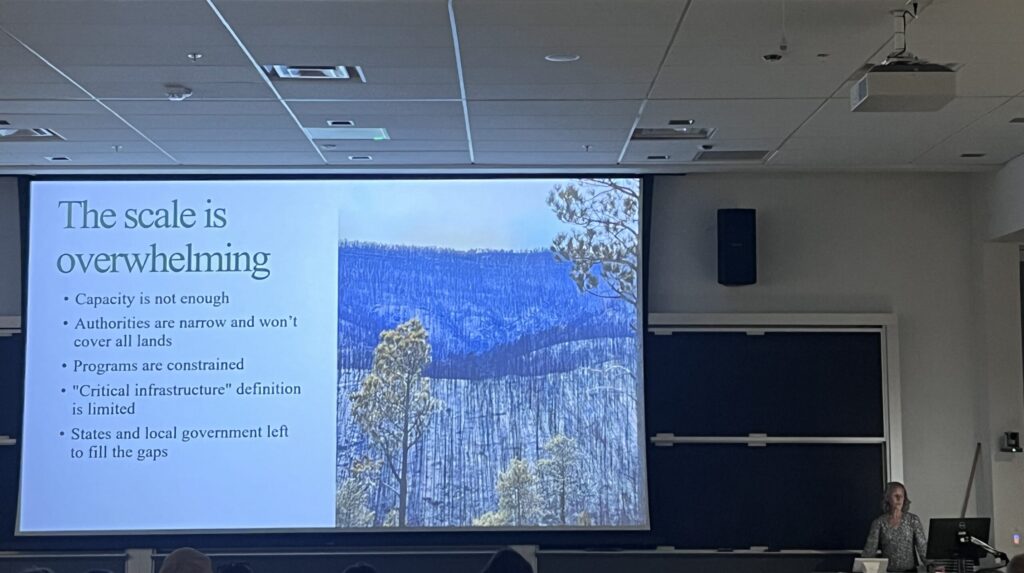Caption: New Mexico State Forester Laura McCarthy flips through slides showing devastation from wildfires and post-fire flooding in New Mexico in recent years, part of a keynote address for a wildfire and watershed symposium Wednesday at the University of New Mexico in Albuquerque. (Photo by Patrick Lohmann / Source NM)
Post-fire forest recovery is possible in a drying West, but only if governments devote as much time and resources to it as they do putting the fires out, New Mexico State Forester Laura McCarthy told a group of people concerned about the state’s forests Wednesday evening..
In a 45-minute address at a lecture hall at the University of New Mexico, McCarthy flipped through photos of charred forests and rivers clogged with ash due to the Hermits Peak-Calf Canyon Fire up north in 2022 and the South Fork and Salt fires in the Ruidoso area this summer.
“This talk does have a bit of heartbreak in it, and when we think about the climate change experience that we’re all in right now, there’s just no denying that there is this strong element of heartbreak,” she said in her keynote address for the Wildfire & Watershed Symposium, held by the Intermountain West Transformation Network.
Claims office pays men more than women for food lost in state’s biggest wildfire
Both disasters have been marred by floods and debris flows on burn-scarred mountainsides, “cascading impacts” she said are occurring at a scale governments don’t have enough resources for. They will make life much more complicated in and around those fire perimeters for years to come.
“The authorities and tools that we have aren’t well-suited for the challenges that we face,” she said. “To the extent that we rely on federal money to help us out, they’ve got all these definitions that we have to comply with to get their money, and most of the time we can’t, because it’s like putting a square peg in a round hole.”
“And so states and local governments are left to fill the gap,” she said.
She called on Congress to take up measures developed by a group of wildfire and watershed experts, known as the Wildland Fire Mitigation and Management Commission. The 50-member commission’s report, released in September of last year after two years in the making, makes 148 recommendations aimed at creating landscapes and communities more resilient to wildfire.
She said the report lays bare the disorganized nature of post-fire recovery, with state and local governments often working at odds with federal partners. The “fragmented” approach to restoring landscapes and watersheds is markedly different from the way mass resources are coordinated to suppress wildfires, where she said it seems like everyone knows what role they’re meant to play and where they fit into efforts to extinguish a fire.
“We just don’t have that for the post-fire environment, but it’s possible that we can use that model to help us out,” she said.

